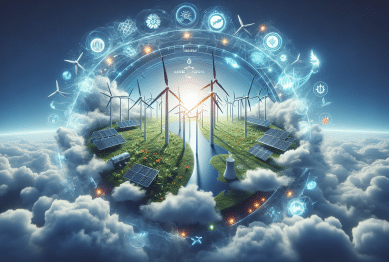Explore the real reasons behind the flood of breaking news alerts on digital platforms and streaming services. This guide uncovers how online news coverage, mobile notifications, and media competition shape what you see and when you see it.
Why Breaking News Alerts Dominate Your Devices
Have you ever wondered why a sudden breaking news alert interrupts your daily routine? It can happen in the middle of a meeting, while watching a favorite show, or even during the night. These notifications are now a standard feature of the digital landscape. The rapid increase in digital news platforms has changed how people receive information. Media outlets push notifications directly to smartphones, tablets, and laptops, ensuring major developments reach massive audiences almost instantly. This constant access allows news to travel faster than ever before. A single tweet can prompt a push notification, and millions tap to read more. The competition among digital outlets intensifies the need to be first, driving the prominence of online news alerts. Major networks like CNN, BBC, Reuters, and digital-only sources such as Google News all jockey for audience attention. As a result, breaking news has moved from the TV to your pocket, creating a new cycle of constant attention and occasional anxiety. These alerts help users stay informed but can sometimes blur the distinction between urgent and less-urgent stories. Stay tuned to see how this dynamic works behind the scenes.
Technology advances are at the heart of this shift. Modern smartphones and wearables support rich notifications: text, images, and even live video teasers. News organizations seize on this, knowing that users are more likely to engage with push alerts than with headlines buried in feeds. Industry research suggests that mobile users are likely to authorize notifications for breaking events considered highly relevant: political changes, natural disasters, or celebrity updates. This prioritization is built on a delicate balance between public necessity and user fatigue. When too many alerts arrive, users become overwhelmed and may silence updates altogether. So, editorial desks debate which stories earn a coveted bragging rights status—’breaking’—and which don’t. This process, though invisible to most readers, is crucial to the experience of consuming news today. Platforms like Apple News and Android News aggregates tailor alerts further using algorithms, learning individual preferences and adjusting future notifications. In a way, your device learns what is most newsworthy to you, blending journalism with advanced analytics.
There’s more to the story. Social media giants like Facebook, Twitter, and even TikTok amplify and sometimes accelerate alert cycles through trending topics and hashtags. Once a story bursts into the ‘trending’ section, newsrooms scramble to catch up, sometimes issuing multiple notifications in quick succession. While this keeps people informed, it also fuels the phenomenon known as ‘alert fatigue’, where the importance of news items may start to feel diminished. Trusted organizations like the Pew Research Center have found that a growing percentage of people report both appreciation and exhaustion from the barrage of news alerts. Some even modify notification settings to reduce interruptions. Ultimately, the push for breaking news reflects the evolution of journalism in a mobile-first world—one where headlines are always just a swipe away.
How Online News Coverage Shapes Your Perspective
Online news coverage doesn’t just update you on events—it shapes what you know and how you feel about it. With the rise of streaming services and 24/7 websites, readers encounter stories tailored to their browsing history, social media activity, and even time of day. Major outlets deploy sophisticated tools analyzing reader engagement, which impacts future headlines and visual prominence. For example, if a specific local event draws high clicks or shares, algorithms ensure more stories about similar topics appear on your feed. This creates a feedback loop, where popular subjects get more attention—and editors take notice. When a breaking story emerges, platforms cluster coverage, showing video clips, interactive maps, and key facts within minutes. This highly responsive system can make coverage seem more immediate and personalized, but it also risks narrowing exposure to a wider range of issues.
The business model behind online news fosters this dynamic. Digital advertising often rewards clicks, meaning the more users engage, the more revenue platforms generate. This influences editorial choices in subtle but powerful ways. Infotainment, dramatic headlines, and emotionally resonant stories frequently outcompete slower-burning stories like local government, health research, or education policy. In this competitive environment, alert-based journalism becomes a tactic to hold user attention and boost advertising potential. According to studies from Columbia Journalism Review, there’s ongoing debate about whether this economic incentive strengthens or weakens the quality of journalism overall. Newsrooms face the daily challenge of balancing public interest with business realities.
Readers can still take an active role. Fact-checking information and following updates from established, reputable organizations improve media literacy. Some experts recommend diversifying news sources, especially for high-impact events. Google News, BBC, NPR, and other globally respected networks are valuable starting points for balanced reporting. Many platforms now integrate fact-check labels and highlight corrections, helping audiences distinguish verified information from speculation or unconfirmed reports. By staying aware of the mechanics of online news coverage, readers can make more informed decisions and maintain a balanced perspective in the flood of notifications and headlines.
The Rise of Streaming News and Its Impact
Streaming news services are changing the face of journalism. Platforms like YouTube Live, Facebook Live, and direct streaming from major news organizations allow audiences to watch developing stories in real time. This instant visibility increases transparency but also intensifies the race for breaking news. Producers coordinate live feeds with mobile updates, creating a cross-platform surge when major stories break—for example, during election nights or after major natural disasters. The effect is palpable: tens of thousands quickly tune in, while millions receive push notifications offering a ‘watch now’ option.
These live-streaming capabilities empower viewers to experience events as they unfold, blurring the boundaries between traditional reporting and citizen journalism. Sometimes, newsrooms feature footage sourced from eyewitnesses or mobile phones, adding an on-the-ground perspective impossible with staged broadcasts. However, this speed comes with caveats: unconfirmed facts or graphic images might slip through before editorial review. This increases the importance of digital literacy, as viewers need to distinguish between raw footage and carefully fact-checked updates. Streaming services also prompt traditional TV news networks to adapt, embracing live coverage and dynamic programming on digital channels to retain viewership.
For news consumers, streaming opens opportunities to watch segments at their convenience and revisit critical updates. Some platforms offer replay features, curated highlight reels, or live Q&As, providing interactive experiences missing from old broadcast schedules. Service providers continue expanding their reach with on-demand news, adapting to changing audience behaviors. Overall, streaming disrupts established rhythms of news delivery and broadens the reach of news organizations well beyond national borders, ushering in a new era where anyone with an internet connection can tune in and participate.
The Psychology Behind News Consumption Habits
Why do people check news notifications so frequently? Psychologists identify a mix of social, emotional, and practical reasons. Staying informed helps users feel connected, safe, and in control. For many, news alerts provide a source of discussion with friends and family or serve as tools for professional decision-making. The brain’s ‘reward center’ may even associate each new update with a small burst of satisfaction. Over time, frequent notifications and high drama headlines can produce a cycle of curiosity and anxiety. This phenomenon, sometimes called ‘news addiction’, can contribute to elevated stress levels and difficulty unplugging.
Researchers at organizations like the American Psychological Association suggest setting limits on news consumption—especially during times of crisis. Curated news digests, scheduled ‘news breaks’, or following only select trusted sources are proven strategies. Many people benefit from a ‘digital detox’ approach, reducing the number of devices delivering push updates. Some news apps even support ‘quiet hours’ or customizable notification settings, designed to lower user stress without sacrificing reliability. These features are increasingly common as platforms respond to growing awareness of mental health impacts tied to news alerts.
Understanding personal triggers and emotional responses is key. Some events prompt a desire for constant updates, while others may encourage disengagement. Experts recommend mindful consumption: checking news at set times, avoiding sensationalism, and seeking stories that offer constructive perspectives rather than just alarm. Schools, workplaces, and families can help by discussing healthy news habits. Ultimately, empowered news consumers can better navigate the digital deluge, preserving both awareness and peace of mind.
Making Sense of News in the Digital Age
Sorting reliable news from noise is increasingly challenging—yet more important than ever. Media watchdogs and journalism institutes provide resources training users to spot bias, misleading headlines, and misinformation. Features such as verified source tags, fact-check icons, and transparency about corrections offer extra layers of reassurance. Organizations like the News Literacy Project curate lesson plans and quizzes that help users, especially young people, build lifelong critical thinking habits. For anyone seeking to understand the world, these resources are invaluable.
The responsibility doesn’t lie solely with readers. News organizations themselves play a vital role in maintaining public trust. Many now publish codes of ethics, editorial guidelines, and regular audits of news accuracy. Independent fact-checking groups, like those recognized by the International Fact-Checking Network, keep standards high and foster accountability. Expect more technological innovation in this space, with artificial intelligence and machine learning tools flagging suspicious stories and improving editorial workflows. Readers increasingly expect transparency not just about news content, but also about how stories are gathered and presented.
Navigating the digital news ecosystem takes effort and intentionality. Reviewing push notification settings, diversifying news sources, and questioning dramatic headlines all support a healthier relationship with news. Informed news consumption isn’t just an individual habit—it strengthens communities and builds resilience against misinformation. By being aware of how digital tools influence news delivery and reception, everyone can become a more empowered participant in society’s conversations.
References
1. Pew Research Center. (2022). News consumption across social media in 2022. Retrieved from https://www.pewresearch.org/journalism/2022/09/20/news-consumption-across-social-media-in-2022/
2. American Psychological Association. (2020). How to manage your news consumption. Retrieved from https://www.apa.org/topics/covid-19/manage-news-consumption
3. Columbia Journalism Review. (2021). The impact of digital news alerts on journalism. Retrieved from https://www.cjr.org/analysis/news-alerts-and-their-impact.php
4. News Literacy Project. (2023). Resources for educators and the public. Retrieved from https://newslit.org/educators/resources/
5. BBC News. (2023). How BBC News chooses breaking stories. Retrieved from https://www.bbc.com/news/blogs-the-editors-27380636
6. Reuters Institute for the Study of Journalism. (2022). Digital news report. Retrieved from https://reutersinstitute.politics.ox.ac.uk/digital-news-report/2022









